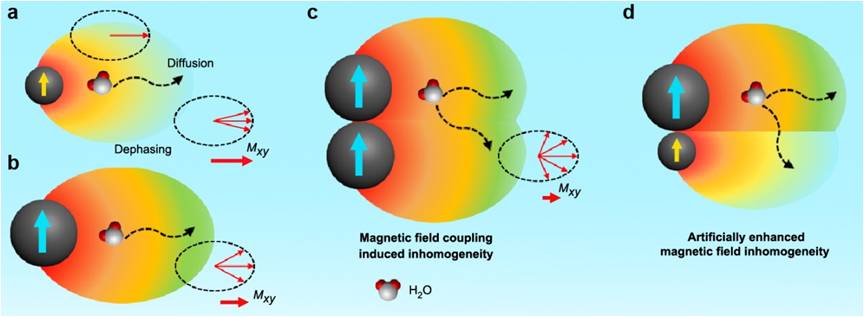XMU research team publishes findings in Nature Communications

Recently, the research team of the XMU Center of Molecular Immunology and Molecular Diagnostics led by Prof. Chen Xiaoyuan has made significant advance in the field of molecular imaging research, publishing a paper entitled “Artificial local magnetic field inhomogeneity enhances T2 relaxivity” in Nature Communications (2017, 8: 15468. doi: 10.1038 / ncomms15468).
Clustering of magnetic nanoparticles (MNPs) is perhaps the most effective, yet intriguing strategy to enhance T2 relaxivity in magnetic resonance imaging (MRI). However, the underlying mechanism is still not fully understood and the attempts to generalize the classic outersphere theory from single particles to clusters have been found to be inadequate. The paper showed that clustering of MNPs enhances local field inhomogeneity due to reduced field symmetry, which can be further elevated by artificially involving iron oxide NPs with heterogeneous geometries in terms of size and shape. The r2 values of iron oxide clusters and Landau–Lifshitz–Gilbert simulations confirmed the hypothesis, indicating that solving magnetic field inhomogeneity may become a powerful way to build correlation between magnetization and T2 relaxivity of MNPs, especially magnetic clusters. This study provided a simple yet distinct mechanism to interpret T2 relaxivity of MNPs, which is crucial to the design of high-performance MRI contrast agents.
The paper pioneered employing magnetic field inhomogeneity to elucidate the correlation between single MNPs and the MRI contrast agents, which is expected to fill a gap in the theory on contrast agents of MNPs clustering and shall provide an important reference for developing new and high-performance MRI contrast agents.
For the full article of this paper, please click on the link below: https://www.nature.com/articles/ncomms15468
Edited by Li Zhiruo & Luo Shuang





